Addressing Underlying Causes Versus Symptom Management in Pain Care
November 18, 2025
16 min

Understanding the Dual Approach in Pain Management
Differentiating Between Addressing Causes and Managing Symptoms
Pain management involves two interconnected approaches: targeting the underlying causes of pain and alleviating the symptoms to improve patient quality of life. While treatments aimed at causes focus on conditions like arthritis, nerve damage, or inflammation through medical and sometimes surgical means, symptom management concentrates on reducing pain intensity and its impacts through therapies, medications, and supportive care.
The Importance of Holistic Pain Care
A comprehensive, patient-centered pain management plan integrates physical, psychological, and complementary therapies. This includes chiropractic adjustments to realign and improve joint function, acupuncture, physical therapy, stress-reduction techniques such as mindfulness, and lifestyle modifications. Holistic care acknowledges that chronic pain can affect mental health, necessitating strategies like cognitive behavioral therapy to address anxiety and depression alongside pain symptoms.
Overview of Pain Types and Challenges
Pain manifests primarily as acute or chronic. Acute pain is short-term, often resolving with healing, while chronic pain persists beyond three months, significantly diminishing function and wellbeing. Chronic pain is complicated by overlapping syndromes and diverse causes including musculoskeletal problems, neuropathic factors, and systemic conditions. Effective management requires multidisciplinary efforts addressing both biological and psychosocial components to break persistent pain cycles.
This dual approach ensures not only reduction of discomfort but also enhancement of daily function, empowering patients to lead fuller lives despite chronic conditions.
The Complexity of Chronic Pain and Its Impact on Quality of Life
What is chronic pain and how common is it?
Chronic pain is defined as pain lasting longer than three months, affecting an estimated 20% to 25% of adults in the United States. It can occur in various forms such as arthritis, back pain, fibromyalgia, migraines, nerve pain, and cancer-related pain. Because it persists beyond typical healing times, chronic pain often becomes a complex, long-term health challenge. For more detailed information, see Chronic pain overview.
What causes chronic pain and what symptoms are commonly experienced?
Chronic pain arises from diverse causes including nerve damage, musculoskeletal problems, inflammation, autoimmune diseases, and sometimes unknown origins. Symptoms vary but commonly include aching, burning, stiffness, shooting sensations, and throbbing pain. These symptoms can vary in intensity and may affect any body part. Learn more about Common causes of pain and Symptoms of chronic pain.
How does chronic pain affect mental health?
Chronic pain frequently coexists with mental health conditions such as depression, anxiety, and post-traumatic stress disorder. The continual physical discomfort contributes to emotional distress, sleep disturbances, irritability, and mood swings, complicating management and worsening overall health outcomes. See Chronic pain and mental health and mental health and chronic pain for further insights.
What is the impact of chronic pain on daily functioning?
Individuals with chronic pain often experience significant impairment in everyday activities and quality of life. It can limit mobility, decrease productivity at work, and reduce participation in social and recreational activities. The pervasive nature of chronic pain necessitates comprehensive management strategies that address both physical symptoms and emotional well-being to improve overall function and life satisfaction. Explore Improving quality of life with chronic pain and Comprehensive pain management plans for available approaches.
Symptom Management: Techniques for Immediate Pain Relief
What is the Objective of Symptom Management in Pain Care?
Symptom management aims primarily to reduce pain intensity and improve a patient's function and quality of life, rather than achieving complete pain elimination. It focuses on addressing immediate discomfort while preparing the body for long-term management strategies. For more details, see Managing pain during end of life care.
What are Common Pharmacologic Treatments Used?
Pharmacologic treatments typically include:
- Non-opioid analgesics: Such as paracetamol and nonsteroidal anti-inflammatory drugs (NSAIDs) to reduce inflammation and mild-to-moderate pain.
- Opioids: Including mild opioids like codeine and strong opioids such as morphine, used cautiously due to risks of side effects and dependency.
- Adjuvants: Certain antidepressants and anti-epilepsy drugs may help manage neuropathic and chronic pain.
Medication choice depends on pain type, severity, and patient health, and requires professional guidance to minimize side effects like nausea, constipation, and drowsiness. See Types of pain medicines and managing pain medicines for more information.
How Do Procedures Such as Nerve Blocks and Injections Assist With Pain Relief?
Interventional procedures, like nerve blocks and epidural steroid injections, provide targeted relief by interrupting pain signals at specific sites. These minimally invasive techniques are often utilized in chronic or severe pain cases when medications alone are insufficient. They help reduce inflammation and swelling around nerve tissues, promote healing, and can improve mobility. However, they require careful patient selection by specialists due to possible risks such as infection or nerve damage. Learn more about Pain management procedures and Pain management injections.
What Complementary Therapies Are Recommended for Immediate Symptom Relief?
Complementary therapies are valuable for enhancing symptom relief alongside conventional treatments. Techniques include:
- Acupuncture: Stimulates nerves and muscles to trigger natural pain relief.
- Massage Therapy: Reduces muscle tension and stress, providing quick pain alleviation.
- Chiropractic Care: Improves spinal alignment to decrease nerve irritation and restore function.
- Heat and Cold Therapy: Provides localized relief by reducing inflammation or relaxing muscles.
These therapies support reducing reliance on medications and enhance overall well-being. For details, see Complementary medicine techniques, Acupuncture for chronic pain, and Chiropractic adjustments benefits.
By integrating pharmacologic methods, interventional procedures, and complementary therapies, symptom management offers a comprehensive approach to immediate pain relief that can be personalized for better patient outcomes. For comprehensive strategies, refer to Comprehensive pain management plans.
Addressing Underlying Causes: Root Treatments in Pain Care
Why Is Diagnosing Underlying Conditions Important in Pain Management?
Identifying the root causes of pain is essential to developing an effective pain management plan. Chronic pain often stems from complex underlying issues such as arthritis, nerve damage, autoimmune diseases, or musculoskeletal dysfunction. Without pinpointing these causes, treatments may only mask symptoms temporarily rather than resolving the source of discomfort. Accurate diagnosis improves treatment precision and helps prevent long-term complications like mental health issues or decreased mobility.
What Multidisciplinary Diagnostic Methods Are Used?
A comprehensive assessment typically involves a team of healthcare professionals, including pain management specialists, neurologists, psychologists, and therapists. Diagnostic tools include physical examinations, blood tests, imaging (X-rays, MRIs), nerve conduction studies, and spinal fluid analysis when necessary. Combining insights from various specialists ensures a holistic understanding of each patient's unique condition, enabling personalized pain management care plans that address the root causes rather than just symptoms.
Which Therapies Target Root Causes of Pain?
Chiropractic care is a prominent therapy focused on correcting spinal and joint misalignments that contribute to nerve irritation and musculoskeletal pain. Techniques like spinal manipulation, joint mobilization, and myofascial release help restore function and reduce inflammation. Physical therapy for pain complements this approach by strengthening muscles, improving flexibility, and enhancing posture, addressing biomechanical contributors to pain.
What Are the Benefits of Treating Causes Versus Symptoms?
Targeting underlying causes rather than only alleviating symptoms leads to longer-lasting pain relief and improved overall function. Patients experience increased mobility, reduced reliance on medications, and often a better quality of life with pain management. Treating root problems also helps prevent pain recurrence and decreases the likelihood of developing secondary issues such as depression or anxiety. This comprehensive pain management strategy empowers patients to actively manage their health with a multidisciplinary team guiding their journey toward wellness.
Holistic and Integrative Approaches Enhancing Long-Term Pain Management

What roles do acupuncture, chiropractic, massage, yoga, and mindfulness play in pain management?
Holistic therapies such as acupuncture for pain relief, chiropractic care benefits, massage therapy for pain relief, yoga for arthritis pain, and mindfulness-based pain approaches are vital components in managing chronic pain.
- Acupuncture stimulates nerves and muscles with thin needles, promoting natural pain relief.
- Chiropractic care realigns joints and the spine, reducing nerve irritation and enhancing mobility.
- Massage therapy alleviates muscle tension and decreases pain through various techniques like deep tissue and reflexology.
- Yoga and Tai Chi combine gentle movement with breathing and meditation, improving function and reducing discomfort.
- Mindfulness-based stress reduction calms the nervous system, helping to lower muscle tension and pain perception.
How does the Cleveland Clinic's holistic pain management program support patients?
Cleveland Clinic offers a multidisciplinary Holistic Pain Management Program that integrates conventional and complementary therapies including acupuncture, chiropractic manipulation, physical therapy, osteopathic care, nutrition, and yoga.
Their program emphasizes individualized treatment plans and psychological support through holistic psychotherapy, recognizing the mental health aspects of chronic pain.
This approach aligns with evidence-based pain management services advocating reduced reliance on medications and improved patient quality of life.
What is the impact of lifestyle modifications and psychological support on pain management?
Lifestyle changes such as increased physical activity and pain relief, healthy nutrition, and sleep hygiene contribute significantly to reducing inflammation and pain.
Psychological therapies, notably Cognitive Behavioral Therapy for pain, help patients cope with emotional challenges like anxiety and depression often linked to chronic pain.
Health coaching encourages sustaining these healthy behaviors, amplifying long-term benefits.
What evidence supports integrative care models in managing chronic pain?
Research supports that combining multiple therapies—pharmacologic and non-pharmacologic—enhances efficacy, typically improving pain scores by approximately 30%.
Such integrative models focus on improving function and quality of life rather than complete pain elimination.
Collaborative care involving specialists ensures tailored strategies addressing both physical symptoms and mental health, exemplified by programs like those at the Cleveland Clinic and practices in Torrance, California.
These holistic and integrated approaches highlight the importance of viewing pain management through a broad, patient-centered lens that incorporates traditional, complementary, and psychological techniques.
Pain Management in Older Adults: Special Considerations

How common is chronic pain in elderly populations?
Chronic pain affects approximately 65% of American adults over 65, making it highly prevalent among older adults in communities such as Torrance, California. Nearly a quarter of the U.S. population experiences chronic pain, with many older individuals suffering from conditions like arthritis, neuropathic pain, and musculoskeletal disorders (Chronic pain prevalence in the U.S., chronic pain in older adults).
How do older adults describe their pain and what challenges does this present?
Older adults often describe pain differently, frequently using terms like soreness or discomfort rather than sharp or intense pain. This variation complicates diagnosis and requires healthcare providers to conduct careful, thorough evaluations. Pain may present atypically, calling for tailored assessment tools beyond standard scales to capture its true impact on function and quality of life (Pain assessment tools and limitations, Managing chronic pain effectively, Pain management plans).
What are the risks associated with undertreatment and side effects in this age group?
Older adults face risks of undertreatment due to concerns about medication side effects and complexities in managing multiple health issues. Common medication side effects include nausea, drowsiness, constipation, and increased fall risk. Additionally, polypharmacy raises the potential for adverse drug interactions, emphasizing cautious use of opioids and other pain medications (Medication side effects, Risks of Opioid Use in Chronic Pain, Painkiller side effects and management).
What multimodal management approaches are recommended for elderly patients?
Managing pain in older adults benefits from a personalized, multimodal approach combining pharmacologic and nonpharmacologic therapies. Effective strategies include physical therapy, chiropractic adjustments, acupuncture, massage, and psychological support such as cognitive behavioral therapy (Physical therapy for pain, Acupuncture for pain, Psychotherapy in pain management. Lifestyle modifications like gentle exercise, ergonomic adjustments, and stress-reduction techniques for pain enhance function and reduce pain severity (Lifestyle modifications for pain. Collaborative care involving pain specialists, primary care providers, and rehabilitation therapists ensures optimized treatment tailored to individual needs and comorbidities (Multimodal approach to chronic pain treatment, Comprehensive pain management plans.
The Role of Chiropractic Care in Treating Pain at Its Roots
How Do Chiropractic Adjustments Work to Relieve Pain?
Chiropractic care primarily focuses on manipulating the spine and joints to restore proper alignment and function. These adjustments help reduce muscle spasms and inflammation, which are common contributors to chronic pain. By improving joint mobility and decreasing nerve irritation, patients often experience enhanced movement and decreased discomfort. Learn more about the Benefits of chiropractic care and Chiropractic adjustments.
What Specific Techniques Are Used in Chiropractic Treatment?
Several specialized techniques are employed by licensed chiropractors in Torrance and surrounding areas. These include:
- Spinal Manipulation: A quick, controlled force applied to spinal joints aiming to restore alignment. See more about Spine realignment in Torrance, CA.
- Flexion-Distraction: A gentle, non-invasive method that decompresses the spine to relieve pressure. Details on Flexion-distraction technique.
- Trigger Point Therapy: Targets muscle tightness contributing to pain. Read about Trigger Point Therapy for muscle tightness or Trigger Point Therapy for muscle tightness.
- Laser Therapy: Uses Class 4 Deep Tissue Laser to stimulate tissue regeneration and circulation. Learn about Class 4 Deep Tissue Laser therapy.
These techniques are tailored to each individual's needs after careful health assessments as part of Holistic chiropractic treatment plans.
Are Chiropractic Treatments Safe and Effective?
Chiropractic adjustments are generally considered safe with a low risk of serious complications when performed by trained professionals. Most patients report immediate relief from joint pain and improvements in posture and function. Mild soreness post-treatment may occur but usually resolves quickly. For more details, see Safety of chiropractic adjustments and Possible complications of chiropractic treatment.
How Is Chiropractic Care Integrated with Other Therapies in Torrance?
Local practices emphasize a holistic approach, combining chiropractic care with physical therapy, exercise, and psychological support. This multidisciplinary strategy enhances overall treatment effectiveness, addressing both symptoms and underlying causes of pain to improve quality of life for chronic pain sufferers in the community. Explore more about Comprehensive pain management plans and Multidisciplinary pain management teams in Torrance.
Psychological Aspects of Pain: Beyond Physical Symptoms

How do depression and anxiety co-occur with chronic pain?
Chronic pain frequently coexists with mental health conditions such as depression and anxiety. Studies show that up to 67% of people with chronic pain also experience these psychological comorbidities. The presence of depression and anxiety can worsen the perception of pain and reduce patients' ability to cope with symptoms, creating a challenging cycle. Understanding the mental health impacts of chronic pain is critical to effective pain management.
What benefits do cognitive behavioral therapy and mindfulness offer?
Cognitive Behavioral Therapy for pain is effective in managing the emotional aspects of chronic pain by teaching patients coping strategies to handle pain-related stress and negative thoughts. Mindfulness and meditation approaches, including meditation and relaxation techniques, can help reduce pain intensity by calming the nervous system and lowering muscle tension. These therapies improve mood, function, and overall quality of life.
How does mental health impact pain perception and management?
Mental health significantly influences how individuals perceive and manage pain. Chronic pain activates the body's stress response, which may amplify pain signals and increase threat perception, as discussed in pain perception and threat cycle. Anxiety and depression intensify this effect, contributing to heightened pain sensitivity and decreased response to treatments. Mental health challenges also affect adherence to pain management plans and patient engagement in physical and complementary therapies.
Why is mental health screening important in pain care?
Mental health screening in pain management is a crucial component of comprehensive pain management. Screening helps identify anxiety, depression, and suicidal ideation, especially since chronic pain increases risk for these conditions, as highlighted in studies on psychiatric comorbidities and chronic pain. Early identification allows for timely psychological interventions alongside physical treatments, thus improving treatment outcomes. Integrating mental health support within pain care fosters a multidisciplinary pain management teams approach, addressing both physical and psychological dimensions of chronic pain.
Risks and Limitations of Pain Medications and Procedures

What Are the Side Effects and Dependency Issues Related to Opioids and NSAIDs?
Pain medications like opioids and NSAIDs are commonly used in managing both acute and chronic pain. However, opioids carry significant risks including dependency issues in pain treatment, overdose, and increased sensitivity to pain, known as hyperalgesia. NSAIDs can cause side effects such as liver damage, bleeding, and gastrointestinal issues. These risks require vigilant prescribing and monitoring by healthcare providers (side effects of pain medicines).
What Are the Risks Linked to Interventional Procedures?
Interventional pain management procedures—such as nerve blocks in pain management, epidural steroid injections, and spinal cord stimulation—can carry risks including infection and nerve damage risks, and complications arising from invasive techniques. Though often effective, these procedures require careful patient selection and expertise to minimize adverse events.
Why Is Cautious Prescribing and Patient Education Important?
Due to the potential hazards associated with pain medications and interventions, it is critical for clinicians to adopt a cautious prescribing approach. Educating patients about possible medication side effects, the risk of dependency, and signs of complications supports safer treatment experiences. Effective pain management communication encourages patients to share concerns and adhere to prescribed regimens responsibly.
What Are Alternatives to High-Risk Pharmacologic Treatments?
To reduce reliance on opioids and high-risk medications, many pain management programs advocate for complementary therapies and non-pharmacologic therapies. These include acupuncture for pain, chiropractic care benefits, physical therapy for pain, mindfulness techniques, and lifestyle changes such as exercise for pain management and nutritional support. Such holistic approaches often enhance function and quality of life while posing fewer safety concerns.
By valuing comprehensive pain management plans and integrating lower-risk therapies, patients can achieve effective pain relief with minimized adverse effects and improved overall well-being.
The Importance of Patient-Centered, Multidisciplinary Pain Management
Collaborative Care Teams Involving Specialists
Effective pain management plans necessitates collaboration among a diverse team of healthcare professionals. This typically includes pain management specialists, anesthesiologists, neurologists, psychologists, nurses, and therapists. By bringing together expertise from various disciplines, these multidisciplinary pain management teams can address the multifaceted nature of pain, encompassing physical, emotional, and functional aspects.
Tailored Treatment Plans Based on Patient Needs
Individualized comprehensive pain management plans are fundamental in managing chronic and acute pain effectively. Plans combine medications for pain management, physical therapy for pain and psychotherapy in pain management, complementary medicine techniques, and sometimes pain management procedures. Personalization ensures that treatments align with the patient’s specific condition, pain type, lifestyle, and potential comorbidities, resulting in more meaningful relief and improved function.
Communication Strategies for Ongoing Pain Management
Ongoing effective pain management communication between patients and healthcare providers is crucial for successful pain management. Patients are encouraged to share feedback on treatment efficacy and side effects. Providers regularly reassess pain levels, functional improvements, and mental health to refine and adapt strategies. This dynamic approach supports long-term pain control and quality of life enhancements.
How Multidisciplinary Approaches Improve Outcomes
Multidisciplinary pain management teams address the complexities of pain by integrating medical, physical, psychological, and complementary modalities. This comprehensive approach not only targets pain reduction but also emphasizes restoring function and mental well-being. Evidence shows that such coordinated care can lead to notable improvements in pain scores, patient satisfaction, and daily activities, underscoring the value of tailored, collaborative strategies in chronic pain management.
Future Directions: Enhancing Pain Care Through National Strategies and Research

What calls are being made for national pain strategies?
The International Association for the Study of Pain (IASP) advocates for comprehensive national pain strategies. These strategies aim to incorporate advances in pain science into healthcare delivery systems. They emphasize the need for coordinated policies involving education, care models, quality standards, and funding to improve pain treatment nationally.
What barriers impede effective pain management and what solutions are proposed?
Several barriers exist, including limited knowledge among providers, lack of resources, and poor care coordination. These shortcomings contribute to widespread undertreatment, especially for chronic and cancer-related pain.
To overcome these challenges, IASP recommends coordinated government policies and stakeholder coalitions that facilitate knowledge sharing and resource allocation. Enhanced provider education and better multidisciplinary pain management teams collaboration are also key components of these solutions.
How have recent advances in pain science informed treatment?
Neurobiological and epidemiological research has deepened understanding of persistent pain's impact on brain structure and function. Epidemiological data indicate that about 20% of people globally experience moderate to severe chronic pain, affecting their ability to work and live fully.
Such insights reveal the complexity of pain mechanisms, guiding the development of targeted and holistic treatments. They also highlight the importance of addressing mental health comorbidities commonly associated with chronic pain.
Why is ongoing research and policy development critical to holistic pain care?
Chronic pain remains undertreated worldwide despite advances in science. Continued research is essential to innovate new therapies and validate integrative approaches such as acupuncture, chiropractic care, and psychological interventions.
Effective policies ensure these evidence-based modalities become accessible and integrated within standard healthcare systems. Ultimately, research and strategic policy work together to improve quality of life for individuals living with chronic pain by promoting patient-centered, multidisciplinary care.
Striking the Right Balance for Optimal Pain Care Outcomes
Integrating Root Cause Treatment with Symptom Management
Effective pain management emphasizes addressing both the underlying causes of pain and symptom relief. Treatments that realign and improve function, such as chiropractic adjustments, target musculoskeletal issues, while therapies like acupuncture and massage support natural healing and stress reduction. Symptom-focused care, including medications and physical therapy, can improve mobility and reduce discomfort, enhancing quality of life.
Importance of Holistic, Individualized Plans
Pain care is not one-size-fits-all. Tailored plans combining medications, complementary therapies, psychological support, and lifestyle modifications better address the unique needs each patient presents. This multidimensional approach reduces reliance on medications alone and supports physical, emotional, and functional well-being.
Ongoing Collaboration Between Patient and Provider
Continuous, open communication enables adjustments to treatment plans based on patient response, minimizing risks and optimizing outcomes. Regular evaluations and patient education foster shared decision-making, ensuring that care evolves with changing needs.
Encouragement for Comprehensive Care Models
Integrative models combining chiropractic care, physical therapy, psychotherapy, and nutrition exemplify best practices for chronic pain management. This comprehensive strategy encourages sustainable improvements by treating the whole person, not just the pain symptom, promoting lasting wellness.
Recent articles

Simple Lifestyle Adjustments to Maintain a Healthy Spine

Personalized Nutritional Counseling for Improved Health Outcomes

Exploring Non-Surgical Treatments for Spine-Related Conditions
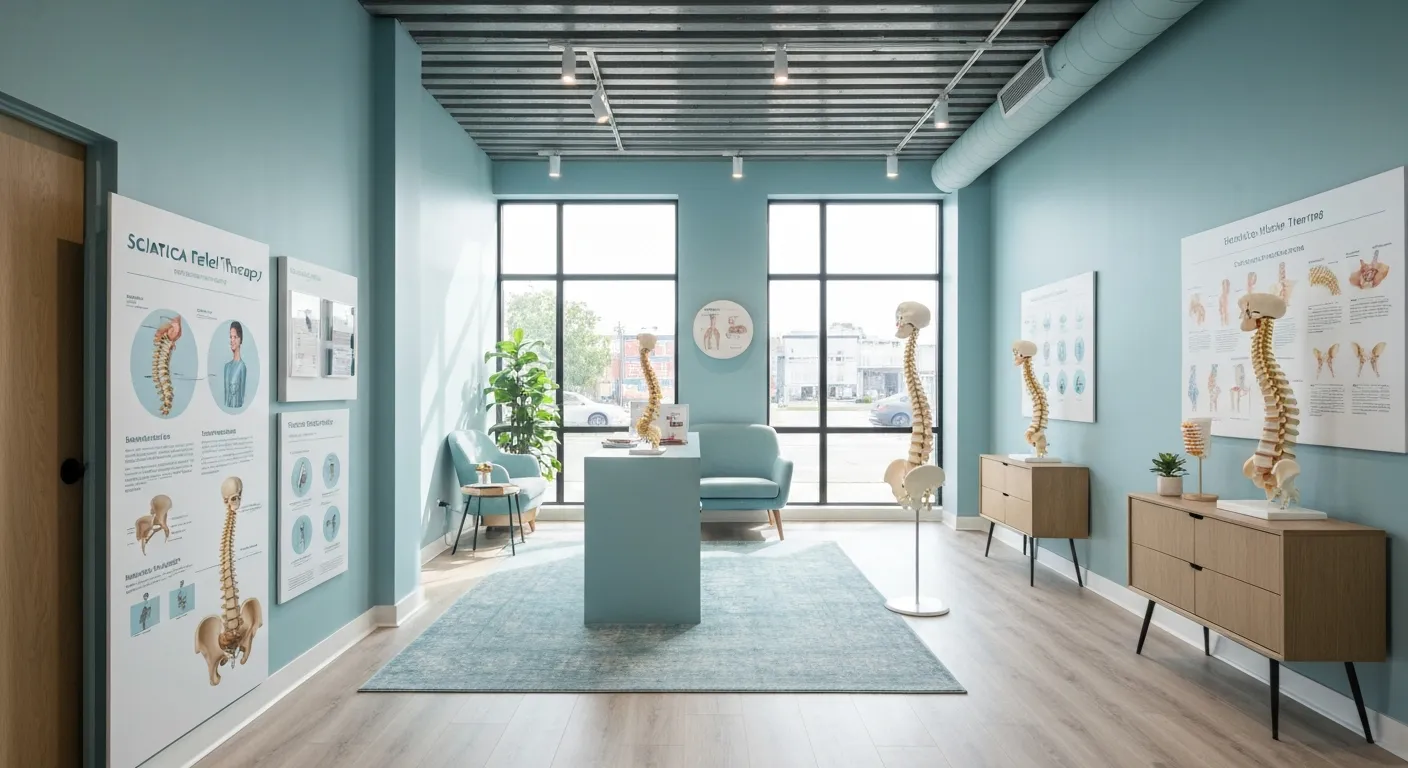
An Introduction to Spinal Decompression for Sciatica Patients

Transformative Success Stories: Patient Experiences with Chiropractic Treatments

Why Chiropractic Care Is Essential for Back Pain Relief

Addressing Underlying Causes Versus Symptom Management in Pain Care

The Role of Nutrition in Enhancing Chiropractic Treatment Effectiveness
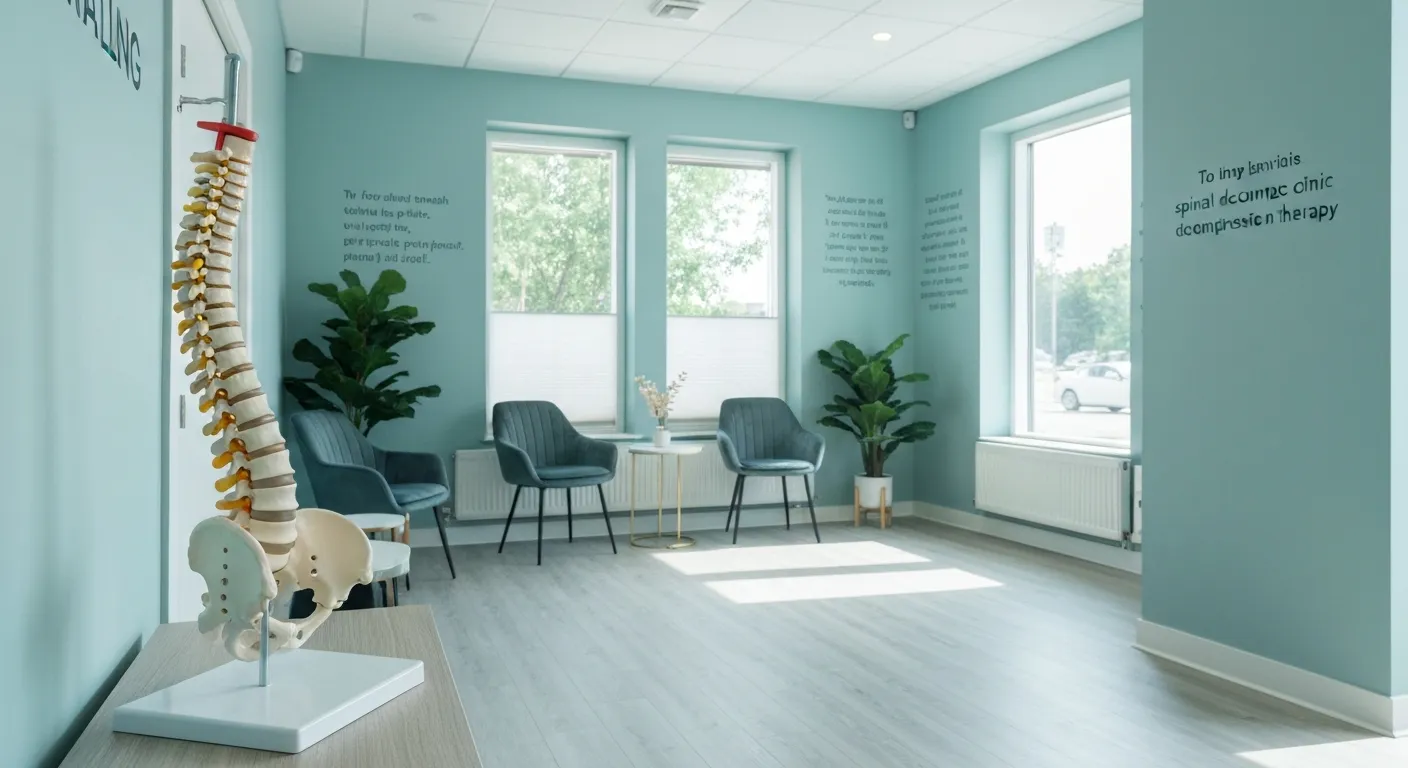
Sciatica Treatment Options: Is Spinal Decompression Right for You?

Lifestyle Tips to Maintain a Healthy Spine and Prevent Back Issues

The Synergy Between Physiotherapy and Chiropractic Treatments

What Happens During Your Initial Chiropractic Consultation

Effective Corrective Exercises for Sustainable Pain Management

Taking a Root Cause Approach to Chronic Pain Management

Holistic Pain Management Techniques Without Surgery

How Patient Success Stories Validate Chiropractic Care Benefits

Spinal Decompression: Innovative Treatment for Sciatic Nerve Pain

Spinal Decompression Therapy: A Non-Invasive Approach to Sciatica Relief

Exploring Holistic Approaches Beyond Surgery for Pain Relief

Practical Lifestyle Advice to Support a Healthy Spine Every Day

Corrective Exercise Routines Designed for Long-Term Pain Prevention

Real Patient Stories: Overcoming Chronic Pain with Chiropractic Care

Lifestyle Changes That Promote a Healthy Spine and Prevent Injury

How Addressing the Root Cause of Pain Leads to Lasting Relief

Non-Surgical Holistic Therapies to Manage Chronic Pain Effectively

Nutritional Counseling's Impact on Physical Health and Healing

Benefits of Regular Chiropractic Care for a Stronger Back

Your First Chiropractic Visit: What to Expect and How to Prepare

Patient Experiences: How Chiropractic Care Transformed Their Lives

Exploring Holistic, Non-Surgical Options for Pain Management

Combining Physiotherapy with Chiropractic Treatments for Enhanced Recovery

Holistic Treatments That Offer Alternatives to Surgery for Pain Relief

Corrective Exercise Strategies for Long-Term Spine Health

How Physiotherapy Complements Chiropractic Adjustments for Better Outcomes

First-Time Chiropractic Visitors: What You Should Know

Understanding the Importance of Treating Pain at Its Source

Adopting Lifestyle Changes to Support Your Spine's Wellness

Utilizing Physiotherapy to Enhance Chiropractic Treatment Outcomes

The Key Advantages of Chiropractic Care for Back Pain Sufferers

Why Focusing on Root Causes Improves Pain Treatment Success

Corrective Exercises That Promote Lasting Pain Relief and Mobility

Sciatica Relief Through Targeted Spinal Decompression Techniques

Preparing for Your First Chiropractic Appointment with Confidence

Healthy Lifestyle Habits for Maintaining Spinal Alignment

Success Stories Highlighting Chiropractic's Role in Pain Recovery

Top Benefits of Chiropractic Care for Chronic Back Pain

Nutrition Tips to Boost Your Overall Wellness and Recovery

How Chiropractic Care Alleviates Back Pain Naturally

How Nutritional Counseling Supports Overall Wellness and Spine Health

Step-by-Step Guide to Your First Visit with a Chiropractor

Using Nutrition to Support Chiropractic and Overall Wellness

Integrating Physiotherapy in Your Chiropractic Healing Journey

How Physiotherapy Complements Chiropractic Adjustments for Faster Healing

Lifestyle Tips for Maintaining a Healthy Spine and Preventing Back Pain

Heartwarming Patient Testimonials Highlighting Chiropractic Success

How Proper Nutrition Supports Chiropractic and Physiotherapy Treatments

Combining Physiotherapy and Chiropractic Treatments for Optimal Recovery

Why Chiropractic Treatments Are Effective for Managing Back Pain

Choosing a Chiropractor: Tips for Finding a Trusted Provider

Integrating Physiotherapy and Chiropractic: Benefits and What to Expect

How Tailored Corrective Exercises Can Aid in Pain Management

Chiropractic Care: A Proven Solution for Alleviating Back Pain

What to Expect at Your First Chiropractic Visit: A Comprehensive Guide

The Importance of Root Cause Analysis in Effective Pain Management

The Role of Corrective Exercises in Sustaining Pain-Free Living

Combining Chiropractic and Physiotherapy for Comprehensive Pain Relief

How Addressing Underlying Causes Improves Pain Treatment Effectiveness

Maintaining Spinal Health Through Lifestyle Changes and Preventive Care

Understanding the Benefits of Chiropractic Adjustments for Back Pain Sufferers

Spinal Decompression Therapy: A New Hope for Sciatica Relief

Lifestyle Recommendations to Support a Healthy Spine and Reduce Pain

Choosing the Right Chiropractor: Key Factors to Consider Before Your First Appointment

Non-Invasive Treatment Alternatives: A Holistic Approach to Pain Relief

Corrective Exercises to Support Long-Term Relief from Chronic Pain

Exploring Non-Surgical Approaches to Spine Health and Wellness

Tips for Daily Habits That Keep Your Spine Strong

Success Stories: How Chiropractic Treatments Changed Lives

Why Focusing on the Root Cause of Pain Leads to Better Outcomes

Nutritional Counseling and Its Impact on Overall Wellness and Recovery

Patient Testimonials That Showcase the Power of Chiropractic Care

Preparing for Your First Chiropractic Appointment: What You Need to Know

Holistic Treatment Options: Beyond Surgery for Pain Relief

Holistic Pain Relief Methods That Avoid Surgery

Nutritional Strategies for Supporting Spine Health and Recovery

First Chiropractic Visit: What Happens and How to Prepare

Chiropractic Patient Success Stories: Inspiring Journeys to Wellness
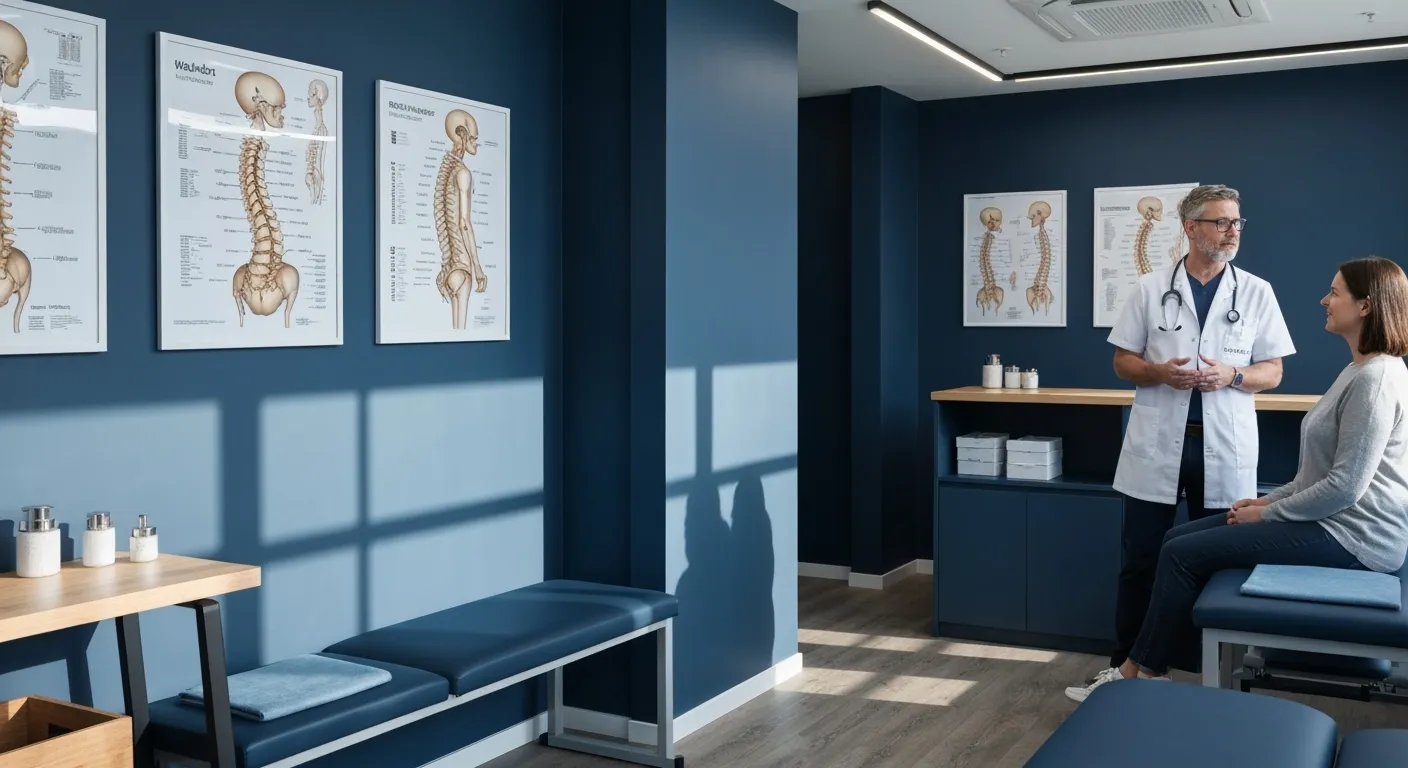
Effectiveness of Spinal Decompression Therapy in Managing Sciatic Nerve Pain

Addressing Pain at Its Source: Why Treating the Root Cause Matters

Corrective Exercise Programs Designed for Long-Term Pain Prevention

Healthy Lifestyle Advice for Maintaining Spinal Alignment

Understanding Spinal Decompression as a Treatment for Sciatica Pain

Benefits of Chiropractic Care Specifically for Back Pain Relief

Understanding Gait Analysis in Physiotherapy
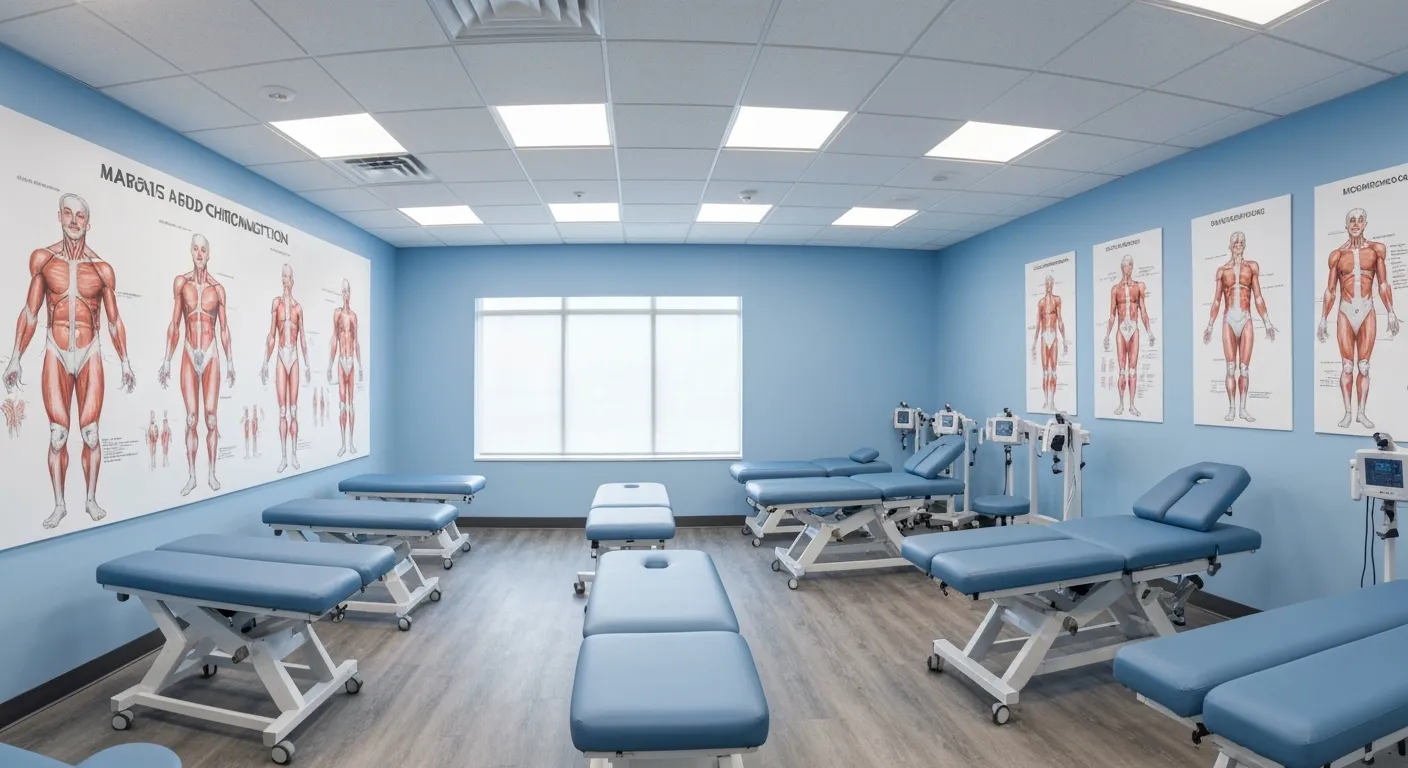
The Difference Between Muscle Soreness and Dysfunction

Workplace Stress Statistics: How Muscle Tension Impacts Productivity

How Physiotherapy Improves Mobility for Seniors

How to Communicate Pain Levels to Your Therapist Effectively
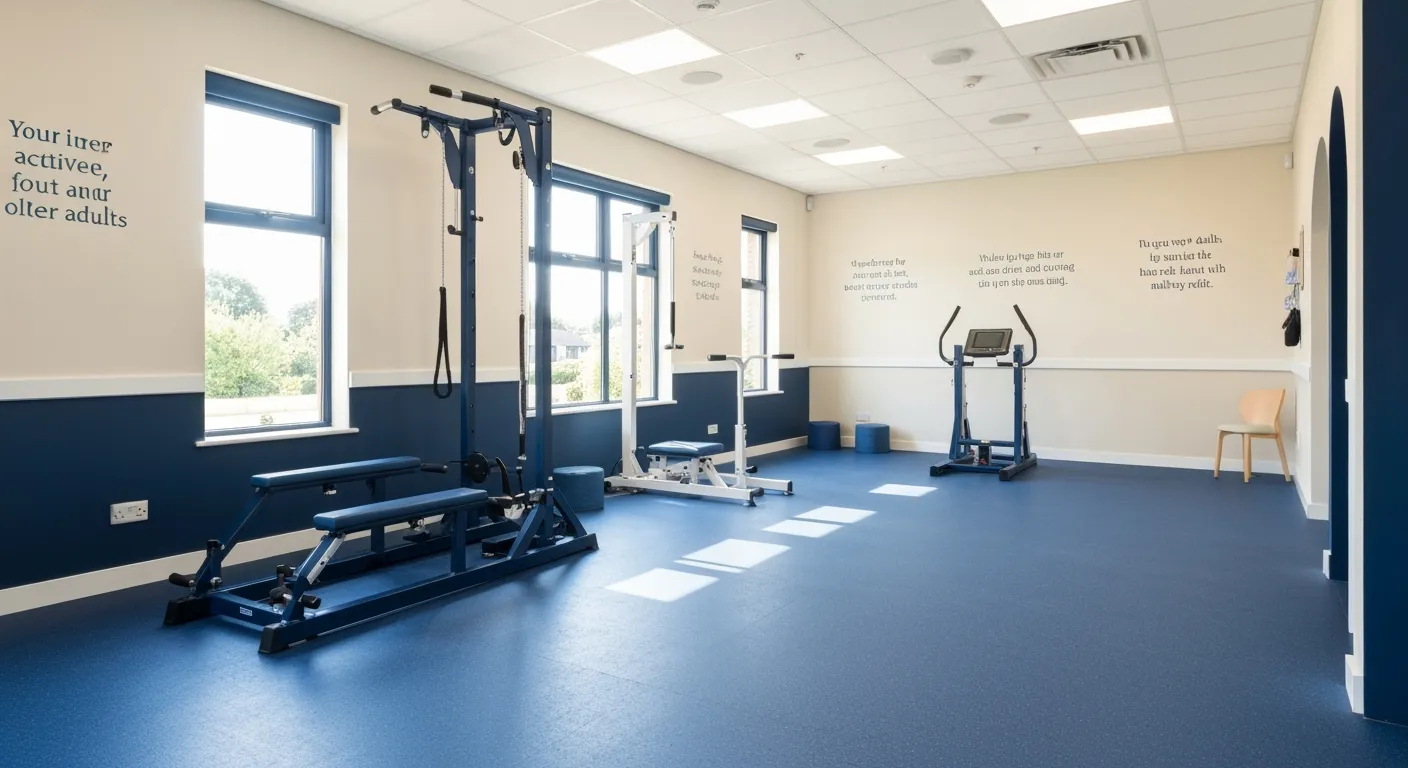
Physiotherapy Interventions for Balance and Fall Prevention

How Physiotherapy Helps Post-Surgical Recovery

